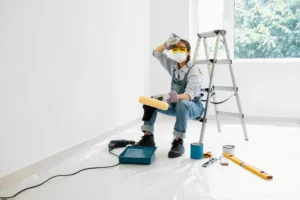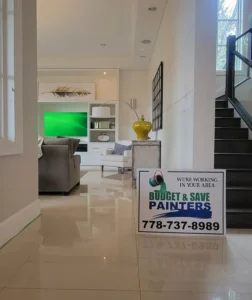Are you planning to get a new paint job done at your premises? May it be residential or commercial, the paint job is the last thing you need to consider when it comes to home or commercial renovations. It can be both a costly and time-consuming process, but it doesn’t have to be if you know what you’re doing.
Most people don’t think twice about the impact a paint job will have on their budget.
Makes sense, right? It’s just painted! But it’s not just painting, and if you get it wrong, the cost of your project could skyrocket before you know what hit you.
Are you one such citizen who is actually concerned that they don’t end up paying extra on a paint job? Well here are a few tips & tricks to help you out.
Calculate Cost of Wall Space per Square Foot
When it comes to painting, the cost is measured by the square footage of paint you need. And to calculate the square footage, you need to know how many walls you want to be painted.
If your house is not very big and has just one floor, this one should be easy. But if it’s a two-story home or there are numerous rooms, then you may find yourself paying particularly more than usual.
So how do you calculate square footage? Well, all dimensions should be measured in feet and inches – width by height – and written down as follows:
For example: The living room is 12′ x 19′.
12’ (width) and 19’ (length);
It means we have to measure all rooms in terms of width by length and calculate for each wall. Single-story homes only need the height of the walls measured.
When you calculate up all the walls, it should come out to be around 100 – 200 square feet. Then multiply this number by the amount in dollars per square foot depending on your area & the type of paint which you’re planning to use.
It will give you a rough idea of what you will have to pay for the painting service.
Buying Paints in Bulk
If you’re having more than one room painted at a time, buy your paint in bulk. This way you only have to pay a bulk amount rather than purchasing each liter at a greater price.
For example, if you want three different types of paints, it is cheaper to buy 30 liters together because the cost per liter would be much less than if you were to purchase 3 liters separately.
Note: Do not use acrylic paints for large areas; they will not dry fast enough and result in an uneven finish. Use oil or latex instead; or better yet, mix them together to create a durable film that will provide good coverage with fewer coats needed.
ALSO READ: Selling Your House? How Painting Different Parts of Your Home Can Increase Its Value
Ensuring Proper Preparation of Walls before Painting
Before you go around painting everything in your house, start with the preparation. If you don’t do this step correctly, you risk having to fix it at a later stage, which would mean paying more money on time and labor.
This may include replacing any cracked or broken tiles, securing loose wallpaper, repairing any dents, filling out any holes appearing because of nails & screws, etc. By repairing all of the old cracks in the walls before applying primer will set the condition of your walls. Primer also helps lockdown any stains or dirt on the walls that may come through as your new paint is being applied.
Concluding Thoughts
Painting your home can be a costly and time-consuming process!
Most people don’t think twice about the impact a paint job will have on their budget. They are not aware that if they make the estimates wrong, the cost of the project can easily skyrocket before they even know what hit them. But not when you have the experts to assist.
Budget & Save Painters in Vancouver covers all your painting requirements. We offer the best competitive rates with no hidden charges or any additional cost surprises. We’ll even help with color selection and design ideas! Call us today at 778-737-8989.



